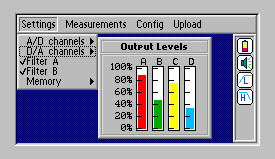SPFD5408 TFT display driver library
The SPFD5408 display controller is supported by the RAMTEX S6D0129 display driver library package.
Full GUI display driver C source code. Processor and C compiler independent.
More info about Graphic RGB Color library (S6D0129 family)
SPFD5408 display controller characteristics
Below is a brief introduction to the main characteristics for the SPFD5408 RGB display controller (seen from a software driver design viewpoint).
For information about the SPFD5408 driver software support please go to the library description.
SPFD5408 device type
- COG RGB color display controller for use in small embedded systems with on-chip frame buffer and TFT screen driver.
- The SPFD5408 supports TFT screens with a size up to 240 x 320 pixels (WxH)
- On-chip TFT driver with voltage generator
Frame buffer
- RGB pixel resolution (bits per pixel): 16-bit, 18-bit.
- SPFD5408 frame buffer organization: 240 RGB pixels on scan line, 320 lines.
Processor interfaces on SPFD5408
SPFD5408 parallel bus interface
- Parallel bus types: 8080 bus type
- Parallel bus size: 8-bit, 16-bit, 18 (32)-bit.
- Addressing concept: Indexed bus interface (1 chip select pin + 1 address bit pin (Data/Command))
Serial bus interfaces on SPFD5408
- SPI bus: 3-wire: /CS, SDIN, SCLK. SPI-3 first byte in CS frame contains: device code, DC, RW. 16 bit transmission frame, (SPI only use 16 bits pr pixel mode)
- The bus interfaces are all supported by the SPFD5408 display driver software package.
Special SPFD5408 hardware features:
- 0-180, 90-270 degree frame buffer rotation with hardware support. Portrait mode, landscape mode.
- Full driver software support.
Display controller vendor
- ORISE Technology Co. Ltd https://www.orisetech.com
Seeking a display controller equivalent to SPFD5408?
Check these:
ILI9320 ILI9325 ILI9326 ILI9328 ILI9331 ILI9335 ILI9221 ILI9222 LGDP4524 OTM2201 OTM3225 R61505 R61580 RM68090 S6D0144 SPFD5420 SSD2119 SSD1298
These display controllers have similar internal configuration and graphic rendering features.
The differences are primarily related to display screen sizes or available bus interface types.
